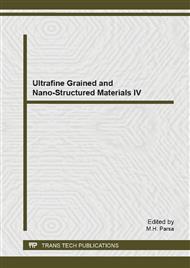p.30
p.36
p.41
p.46
p.52
p.57
p.62
p.67
p.73
Interfacial Examination of Cu/Al Joints Using Ultrafine Al-Si Powder as Brazing Filler Metal
Abstract:
Al-Cu joints have been widely used in electronic and heat exchanger industries due to their excellent electrical and thermal conductivity. Meanwhile, the use of Al in the Al-Cu joints can result in lower weight and cost of the final structure. The purpose of the current study is to join Al to Cu by furnace brazing using ultrafine Al-Si powder. To study the microstructure of the join area, the brazing tests were conducted in the range of 590 to 610°C for 5 to 15 minutes under inert atmosphere. The microstructure of Al/Cu joints was studied by scanning electron microscopy (SEM). The elemental analysis was conducted using an energy dispersive spectrometry (EDS) system. Experimental results show that two kinds of intermetallic compounds (IMCs) mainly Cu3Al2 and CuAl2 phases are formed near the interface of copper and in the braze layer region. The bulky prismatic structure which is formed on the side of Al substrate was found to be α-Al+CuAl2 eutectic.
Info:
Periodical:
Pages:
52-56
Citation:
Online since:
November 2013
Authors:
Keywords:
Price:
Сopyright:
© 2014 Trans Tech Publications Ltd. All Rights Reserved
Share:
Citation:


